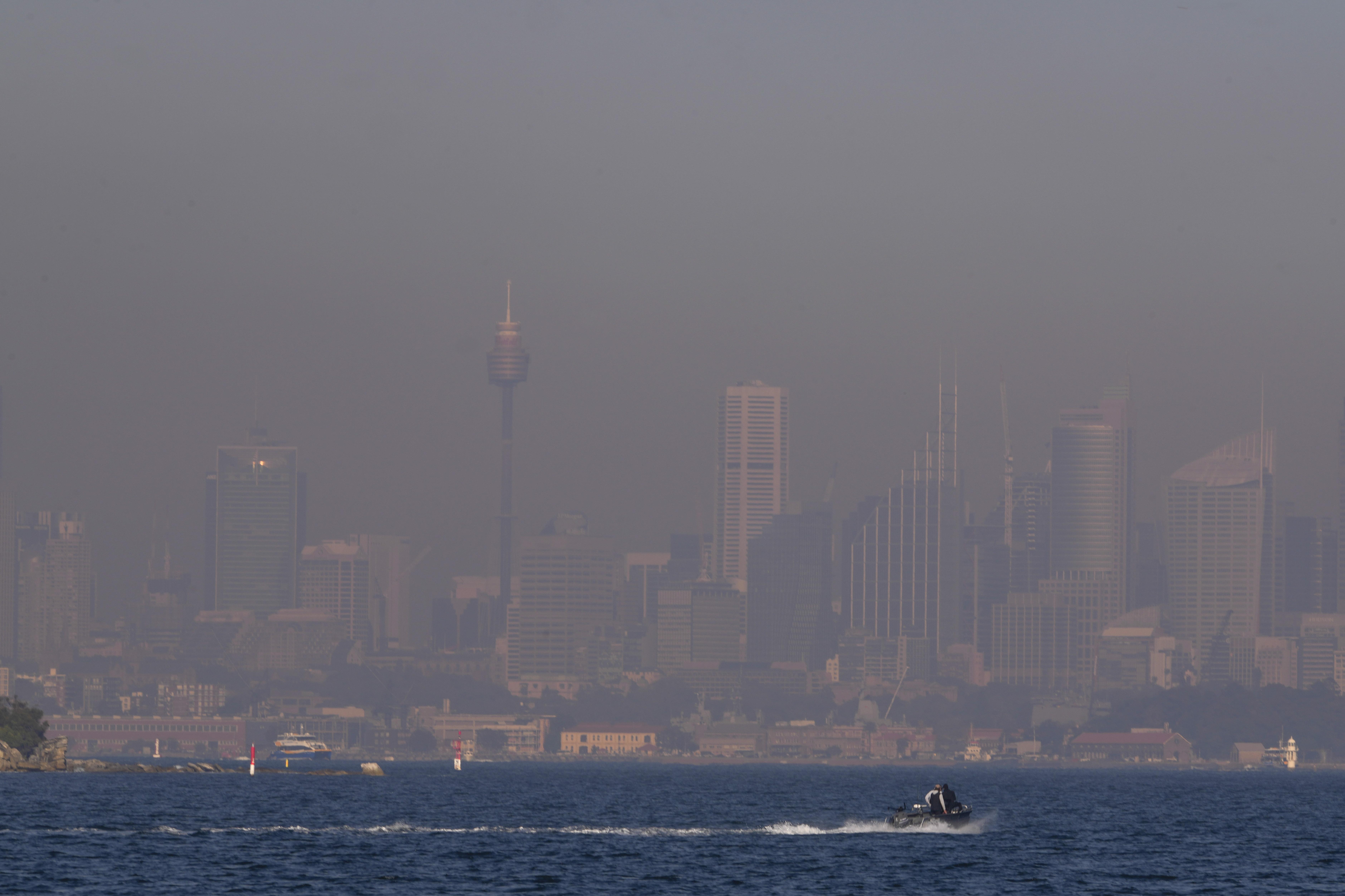 A thick blanket of smoke hangs over parts of Sydney following New South Wales Rural Fire Service (RFS) hazard reduction burns in the past week, Sept 14, 2023. (PHOTO / AP)
A thick blanket of smoke hangs over parts of Sydney following New South Wales Rural Fire Service (RFS) hazard reduction burns in the past week, Sept 14, 2023. (PHOTO / AP)
SYDNEY - An intense spring heat wave sweeping across Australia's southeast raised the risks of bushfires, prompting authorities on Tuesday to issue the first total fire ban in nearly three years for Sydney and shut down several schools.
ALSO READ: Australia swelters in heatwave, temperatures set to break records
Parts of Australia are sweltering in a five-day burst of uncommon spring heat, forecast to last until Wednesday, pushing temperatures up by as much as 16 degrees Celsius above the September average.
The weather forecaster has said the phenomenon could develop between September and November, likely causing extreme weather events from wildfires to cyclones and droughts. That could hit wheat production in Australia, one of the world's top exporters, with winter wheat harvesting set to start in November
Several regions have been given high fire danger ratings as authorities warned high winds could whip up bushfires and urged residents to minimize fire risks at their houses.
More than 500 firefighters and emergency personnel are trying to tame 61 fires across New South Wales state as of Tuesday morning, with 13 not yet contained, authorities said.
READ MORE: Australia: Proposed nuclear power plan costs over $240b
Twenty-one schools in New South Wales, mostly in the state's south, have been closed.
"Due to hot, dry, and windy conditions forecast throughout the day and overnight, several parts of (New South Wales) will experience high fire danger," fire services said on Facebook.
Sydney is set to record five consecutive daytime maximum temperatures of more than 30 degrees Celsius in September, a new record, according to the Bureau of Meteorology.
READ MORE: Thousands in Australia rally for Indigenous referendum
Temperatures could reach 34 degrees Celsius in Sydney on Tuesday, just shy of the September record of 34.6 degrees Celsius in 1965. But a cold front from Thursday will bring some relief to the heat, pushing temperatures down to the low 20s.
After three years of heavy rains and frequent flooding, Australia is bracing for a warm and dry southern hemisphere spring and summer in 2023 due to the high chances of the occurrence of an El Nino weather pattern.
The weather forecaster has said the phenomenon could develop between September and November, likely causing extreme weather events from wildfires to cyclones and droughts. That could hit wheat production in Australia, one of the world's top exporters, with winter wheat harvesting set to start in November.


